Introduction
In the world of lasers, there are many unique types. Each possesses distinct characteristics that make them apt for specific uses and operations. One of the most versatile and widely used is the titanium-sapphire (Ti:sapphire) laser. This article will delve into the various aspects of this remarkable laser, answering questions that surround its crystal, usage, color, advantages, emission wavelength, and tuning range.
What is a Titanium Sapphire Crystal?
To begin with, a titanium sapphire crystal or Ti:sapphire is the gain medium in a Ti:sapphire laser. Gain mediums are elements in a laser system responsible for amplifying the light signal. It’s a synthetic crystal made by introducing titanium ions into a sapphire crystal structure. It has a rich red color due to the titanium ions present in the otherwise colorless sapphire. The titanium ions provide the lasing properties while the sapphire, mainly composed of aluminium oxide, forms a robust and thermally stable structure.
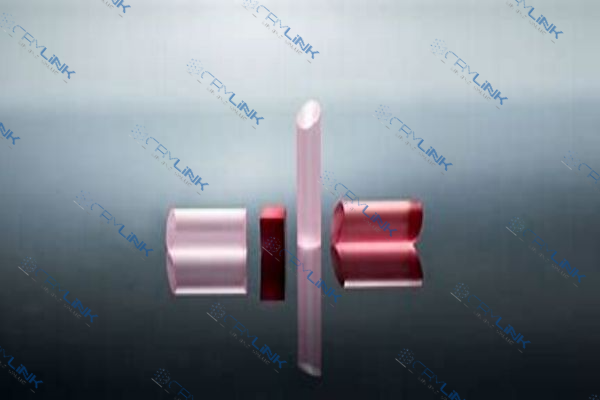
What is a Ti:sapphire Laser and What Color is It?
Ti:sapphire lasers are a type of tunable lasers known for their wide tunability and ultrafast pulse durations. They are solid-state lasers where the lasing medium, the Ti:sapphire crystal, is in a solid form as opposed to gas or liquid. The wide tuning range, flexibility, and stability make these lasers a popular choice in many scientific applications.
Ti:sapphire lasers typically emit a deep red light due to the energy transition levels of the titanium ions in the sapphire crystal. It is important to note, however, that while the crystal itself is red, the color of the laser light that the Ti:sapphire laser emits can vary based on the tuning of the laser.
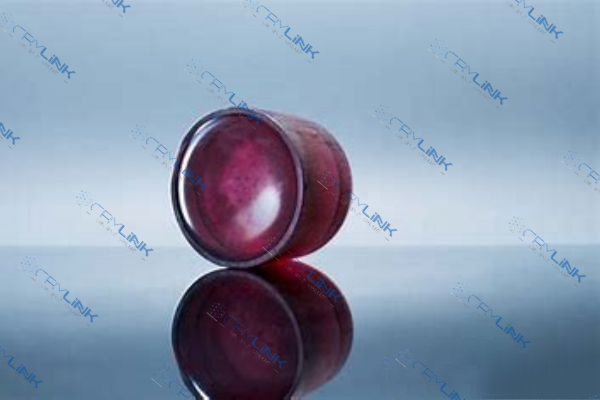
What are Ti:sapphire Lasers Used For?
These lasers are renowned for their versatility and are used across a broad range of applications. In research, they’re utilized in spectroscopy, photochemistry, and atmospheric studies due to their wide tuning range and short pulse duration. Their ultrafast pulsing capability also makes them perfect for use in femtosecond laser systems employed in precision manufacturing and medical surgery, especially in eye surgeries. Moreover, they’re commonly used in high-resolution microscopy and quantum computing research.
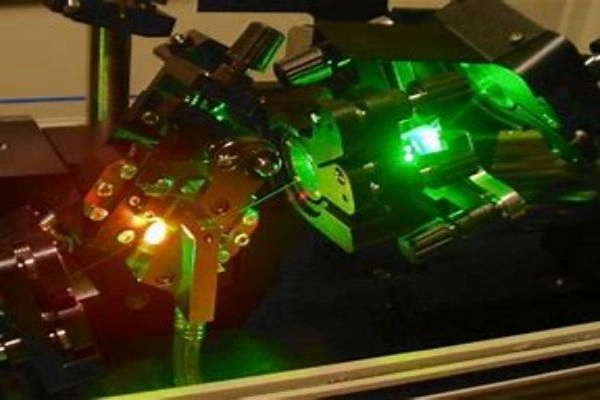
What are the Advantages of a Titanium Sapphire Laser?
Ti:sapphire lasers boast a range of benefits that set them apart from other lasers. One of the primary advantages is their wide tuning range, allowing them to produce laser light in a wide spectrum of wavelengths. This gives researchers the flexibility to choose the optimal wavelength for their specific application.
Another advantage is their ability to produce ultra-short pulses, which make them ideal for precision applications where high peak power and minimal heat dissipation are required. They are also known for their excellent beam quality and high repetition rates, enhancing their usefulness in various fields.
Furthermore, the sapphire crystal provides exceptional thermal and chemical stability, making these lasers robust and reliable even in harsh conditions.
What is the Emission Wavelength and the Tuning Range of the Ti:sapphire Laser?
Ti:sapphire lasers have a broad emission range, typically extending from around 660 nm to 1100 nm, but can be extended with the use of appropriate intracavity elements. This is one of the widest tuning ranges among all known laser types. The extensive tuning range comes from the broad absorption and emission spectra of the titanium ions in the sapphire crystal. This enables researchers to tune the laser to the exact wavelength required for their application, providing unprecedented flexibility and precision.
How to Optimize the Use of Titanium Sapphire Lasers?
Temperature Control: Temperature significantly affects a Ti:sapphire laser’s performance. As lasers generate heat during their operation, appropriate cooling systems are necessary to prevent overheating, which could damage the laser crystal and degrade the beam quality. Depending on the specific laser system, this could be accomplished using active (water or air) cooling systems or passive heat sinks. Precise temperature control systems can also aid in maintaining consistent laser output.
Cavity Design: The laser cavity or resonator, which contains the gain medium, is another factor that requires careful design and adjustment. The cavity’s geometry, including the mirror alignment and spacing, can affect the laser’s output characteristics such as wavelength, pulse duration, and beam quality. Some Ti:sapphire lasers employ tunable cavity designs, allowing precise control over the laser’s output wavelength and pulse duration.
Output Coupler: The output coupler, a partially reflective mirror that allows some of the laser light to exit the resonator as the output beam, can also be optimized. The reflectivity of the output coupler can affect the laser’s power and efficiency. A higher reflectivity can result in more power, but if it’s too high, it can prevent enough light from exiting the laser, limiting the output power.
For applications that require ultrafast pulses, special techniques like Kerr lens mode-locking are used. In this process, the laser’s intense light creates a temporary lens within the crystal, causing the light to focus and defocus as it travels along the cavity, leading to self-amplifying cycles that produce ultrafast laser pulses.
Lastly, handling these powerful lasers requires adequate safety measures. Improper use can lead to serious injuries, particularly to the eyes and skin. It’s important that operators are adequately trained and understand the specific safety protocols for operating these lasers.
Using appropriate laser safety eyewear is a must. The eyewear should be designed to protect against the specific wavelength of the laser in use. It’s also essential to ensure the laser is operated in a controlled environment, away from flammable materials. The use of interlocks and warning signs can further enhance safety by preventing unauthorized or inadvertent use of the laser.
Like all precision instruments, Ti:sapphire lasers require periodic maintenance to ensure optimal performance over time. This can include cleaning of the laser crystal and mirrors, checking and realigning the cavity, and replacing worn-out components. A well-maintained laser not only performs better but also lasts longer, maximizing the return on investment.
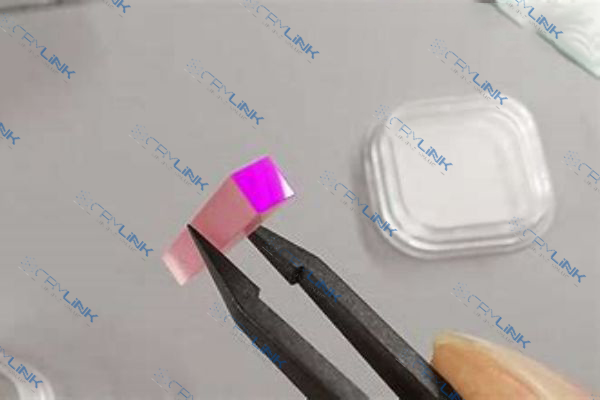
What’s the Future of Titanium Sapphire Lasers?
In a rapidly advancing scientific world, the demand for flexible and high-precision tools such as the titanium sapphire laser will continue to grow. Emerging fields like quantum computing, ultrafast photonics, and advanced medical therapeutics will leverage the tunability and power stability of these lasers.
The future also lies in the continuous evolution of the Ti:sapphire laser technology. Scientists are making efforts to improve its performance further and minimize limitations like the high cost of operation. Innovations such as more efficient cooling systems and better power management can increase its usage across sectors.
Is sapphire Glass expensive?
Yes, sapphire glass is generally more expensive than other types of glass. The reason for this is due to the complex and energy-intensive manufacturing process required to produce it, as well as its exceptional properties.
Sapphire is not naturally clear and requires significant processing to become transparent. It’s made synthetically by growing large crystal boules at very high temperatures and then slicing these into thin sheets or shaping them into specific forms. The energy and equipment needed for these processes contribute to its higher cost.
Despite its cost, sapphire glass is prized for its excellent hardness and scratch resistance, which is nearly comparable to diamond. This makes it a highly desirable material for high-end applications such as luxury watch faces, high-quality camera lenses, and certain smartphone screens where durability and clarity are paramount.
While the price can be prohibitive for some applications, the trade-off in terms of durability and scratch resistance can make sapphire glass a worthwhile investment in certain contexts. However, the decision to use sapphire glass often depends on the specific needs of the application and the budget available.
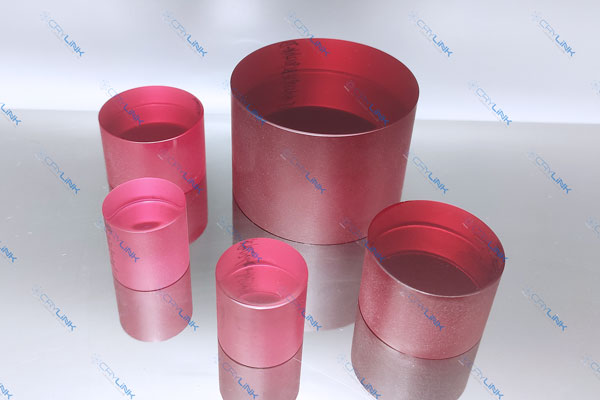
How Much Does a Ti:sapphire Crystal Cost?
The cost of a Ti:sapphire crystal can vary significantly based on its size, quality, and the vendor’s pricing structure. Generally, it’s a costly material due to the complex manufacturing process that ensures high purity and quality. It’s best to directly contact manufacturers or vendors for the most accurate and up-to-date pricing information.
How Does a Ti:sapphire Laser Work?
At its core, a Ti:sapphire laser works much like other lasers. It involves three primary components: the energy source or pump (often another laser like a green laser), the gain medium (in this case, the Ti:sapphire crystal), and the resonator (mirrors that form a closed pathway for the light).
When the pump source energizes the titanium ions in the sapphire crystal, these ions jump to a higher energy state. As these excited ions return to their ground state, they emit photons, a process known as spontaneous emission. These photons then stimulate other excited ions to emit more photons in phase with the initial ones (stimulated emission), amplifying the light within the crystal.
The mirrors of the resonator trap this light, causing it to bounce back and forth through the crystal, continually stimulating more emission and amplification. One of these mirrors is partially transparent, allowing some of the light to escape as the output laser beam.
Unique to Ti:sapphire lasers is their wide tunability. By using different elements in the resonator, such as prisms or diffraction gratings, and adjusting the angle of these elements, the output wavelength of the laser can be precisely controlled, covering a broad range from about 660 to 1100 nm.
Furthermore, Ti:sapphire lasers can be designed to produce ultrafast or femtosecond pulses, useful in many scientific and medical applications. This is typically achieved through a technique known as mode-locking, where all the resonating modes of the laser are made to interfere constructively at regular intervals, creating a series of ultrafast light pulses.
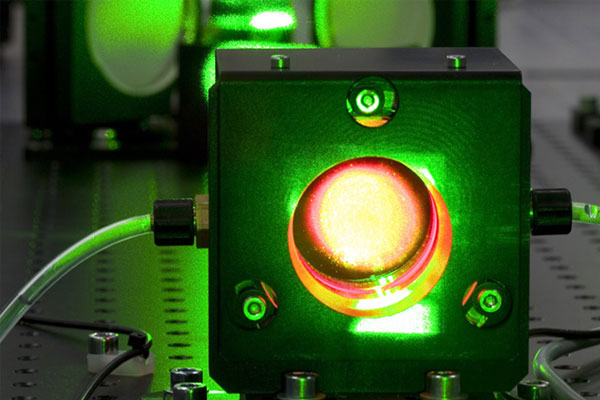
Conclusion
In the complex and diverse world of lasers, the titanium-sapphire laser stands out with its wide range of beneficial characteristics. Its versatility, precision, and reliability make it a go-to choice for many scientists and researchers. From spectroscopy to surgery, the Ti:sapphire laser is a powerhouse, driving scientific discovery and technological innovation. As we continue to explore and understand the realm of light, the potential of such lasers is expected to expand, enhancing their already pivotal role in various fields.

Frank
Frank graduated from the University of Shanghai for Science and Technology, majoring in optics. As a technical engineer at Crylink Company, he deeply understands crystal materials and laser components.
Related Video(s) with this Article
Related Product(s) with this Article
Related Application(s) with this Article
